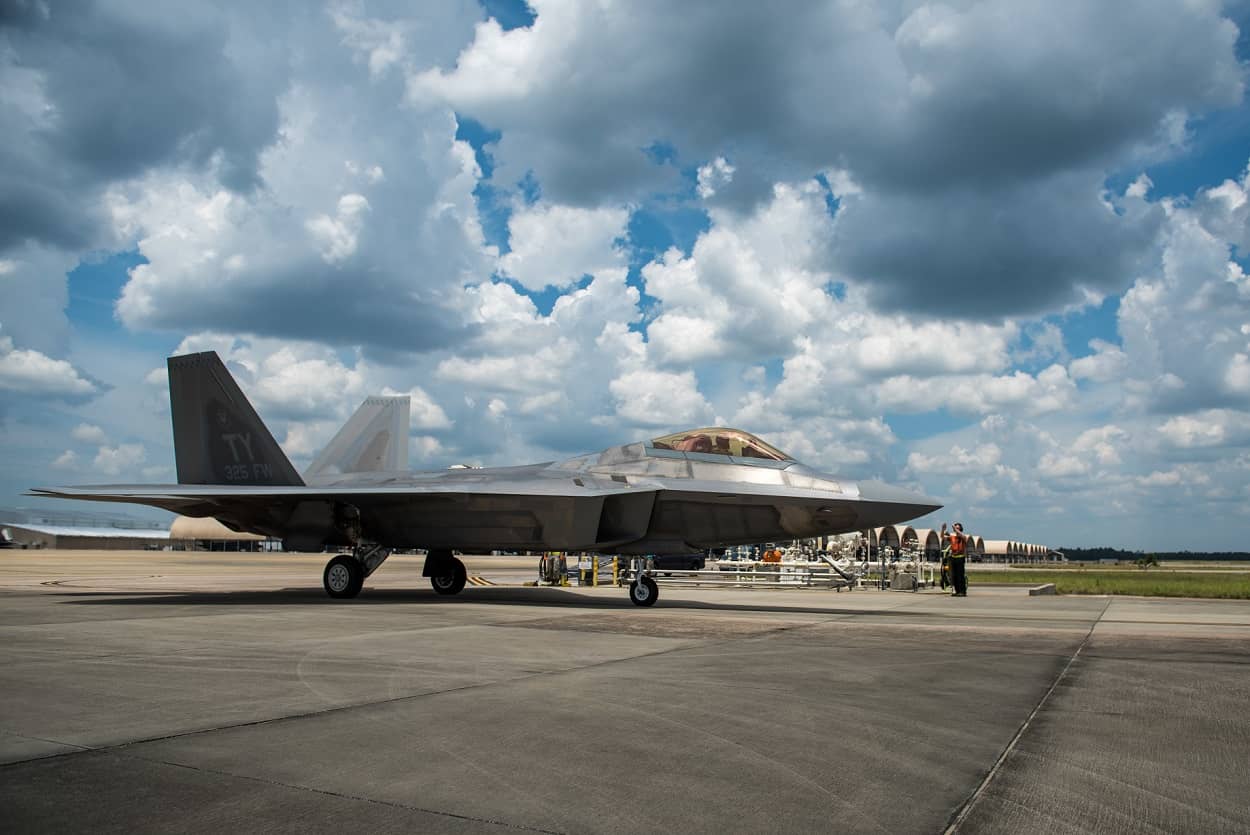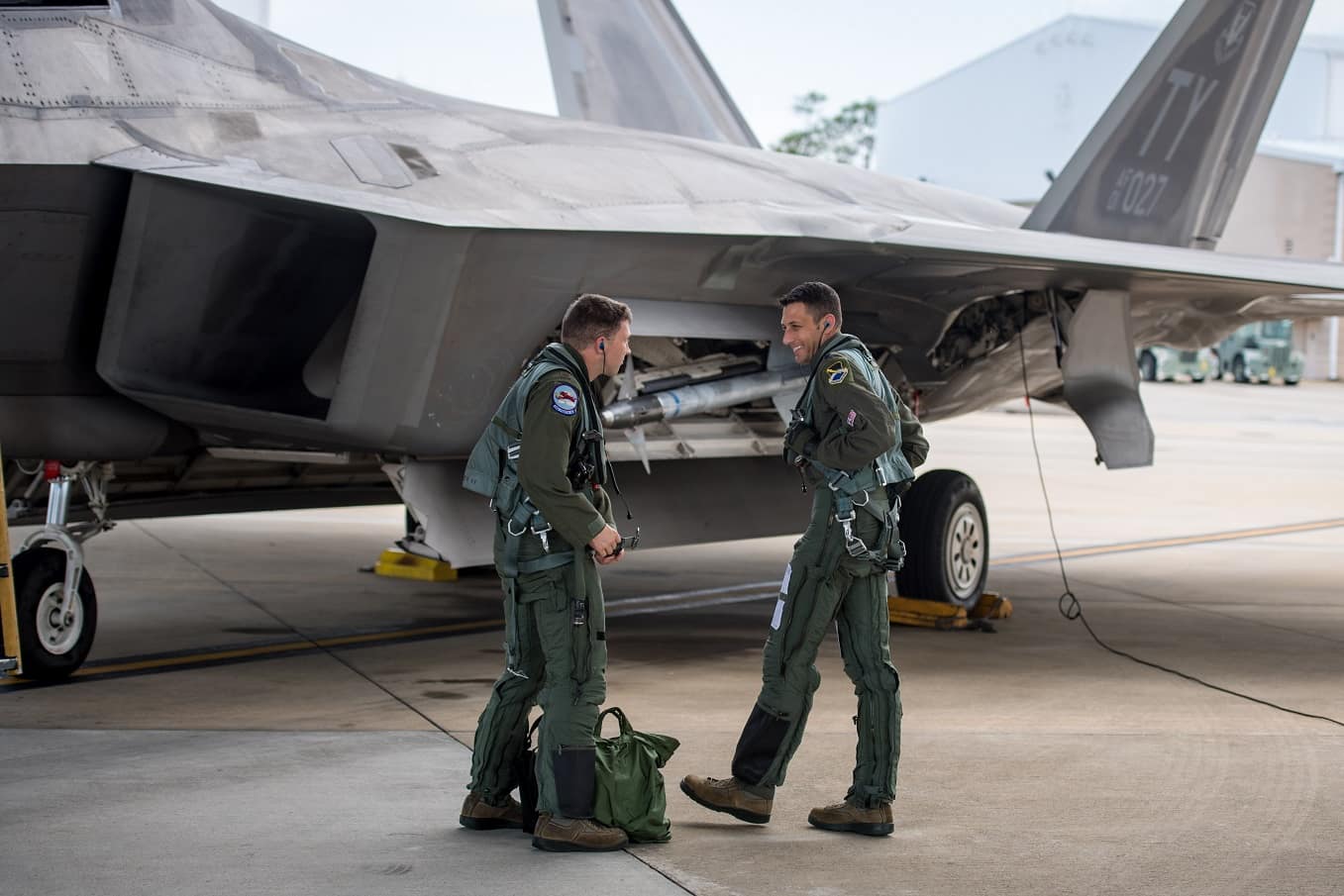F-22 Raptor pilots conduct ‘hot seat’ training
Posted on
U.S. Air Force F-22 Raptor pilots from the 43rd Fighter Squadron out of Tyndall Air Force Base conducted ‘hot seat’ training.
According to 325th Fighter Wing Public Affairs, ‘hot seat’ training designed to increase the amount of combat sorties that are flown. This increase can be very advantageous for the Air Force in future operations.
This training, where a pilot gives control of the jet to another pilot, and ‘hot pits’, Pantograph Fueling Stations, gave the pilots more training time in the air. If the aircraft didn’t record anything unsafe during flight, the next pilot can take it on another flight without turning over the jet to maintenance.
“We’re taking one pilot already in the seat of the jet when it comes back and swapping it for another pilot on the spot,” said Staff Sgt. Nicholas Peters, 325th Aircraft Maintenance Squadron crew chief. “That way the jet never gets officially released back to maintenance—another pilot just accepts it. [Assuming the aircraft did not record anything unsafe during flight] they do a face-to-face brief, then the incoming pilot can take the jet and launch it from there.”
Once on the ground, pilots taxied the aircraft through safety checks and up to the ‘hot pit’ for refueling. One after another, the pilots made their pitstop and received fuel without turning off the engines and waiting on a fuel truck to arrive.
In turn, the pilots took their jet to the next pilot in line, bypassing the checklist maintainers use to get the jet back in the air.
“Since Hurricane Michael devastated Tyndall AFB and the surrounding area, it took a lot of time, energy and effort to bring our operation at Eglin AFB up to full capacity,” said Lt. Col. Jefferey Peterson, 43rd Fighter Squadron director of operations. “During that transition, we absorbed additional pilots, from both active duty and reserves, as a result of the 95th FS having their jets and people split up across the F-22 community.”
According to Peters, pantograph fueling stations at Eglin made hot-pit refueling ideal; it would be wasted potential if they didn’t use it.
Maintainers use the systems for pitstop style refueling of fixed and rotary wing aircraft, and fuel trucks. They are designed to eliminate safety and environmental liabilities associated with rubber hoses.
“Normally we would fly ten [jets] on the first go and eight on the second for a total of 18 sorties,” said Master Sgt. Dustin Holman, 325th AMXS aircraft section chief. “For ‘hot seats’ we fly eight, six and six for a total of 20 sorties.”
On a normal day, the 325th AMXS prepares 13 jets. Three are left as spares, while the other ten are sent on sorties.
Only 11 are needed for hot-pit refueling and rapid crew swaps. This reduces the amount of time it takes to get a new pilot in the air; saving time and producing more sorties with less aircraft.
When the team gets an opportunity they are also able to send out ten jets on the first go, six on a second and eight on a third, for a total of 24 sorties. Making this method very flexible and valuable for catching up with sorties and make up for the time lost after the hurricane.
According to Holman, the 43rd Fighter Squadron is the first F-22 squadron to use these methods. They began practicing before Hurricane Michael struck and now are using them to maximize their training time.
“Using this concept of hot pitting with rapid crew swaps, or hot seat operations as we have been calling it, our team has been able to drastically increase sortie production to levels we have never seen in the history of our organization,” Peterson said. “The hot seat operations concept has been a paradigm shift that is among the most important innovations we have put into effect since the hurricane.”



Subscribe to our newsletter
Promotions, new products and sales. Directly to your inbox.

